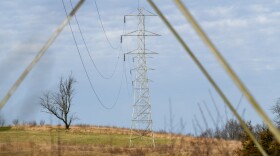-
The massive oil spill in the Kalamazoo River 15 years ago polluted the water and shoreline and left oil-coated wildlife. More than a million gallons of oil was recovered along a more than 35 mile stretch of the river.
-
The National Wildlife Federation says Michigan's environment department should fully review what damage drilling the tunnel for a new pipeline segment might cause.
-
The transition to cleaner energy in Michigan could get an assist through transmission lines to renewable energy from solar and wind in the Great Plains states.
-
Solar and wind energy are sporadic sources of power. Even with enough production to power the entire state of Michigan, storage is needed to keep supply steady with demand. Batteries alone won't suffice.
-
The National Audubon Society's annual Christmas Bird Count is underway until Jan. 5. Coordinated visits to hundreds of sites in the U.S. and Canada to count birds depends on volunteers. There are about 80 sites in Michigan and more than 70 in Ohio.
-
Eleven total congregations across the state are each getting around $100,000 from the program to become more energy-efficient.
-
Researchers found diverse habitat can draw bees, but that gathering makes it easier to spread viral infections among bees. But strategies, including the planting of lots of wildflowers, can reduce the spread of bee pathogens.
-
For more than 120 years, volunteers have taken a day to count and identify birds for the Audubon Christmas Bird Count.
-
People with colorblindness often cannot distinguish colors such as red and green. That can change the experience of seeing fall leaves, or a northern cardinal in the trees. And it's prompted some changes at a couple of state parks.
-
The Bad River Band of Lake Superior Chippewa wanted Line 5 shut down and moved off its land.
Play Live Radio
Next Up:
0:00
0:00
Available On Air Stations








